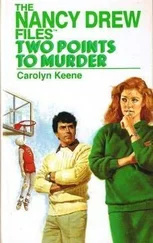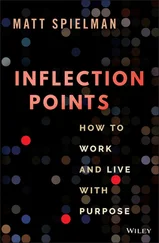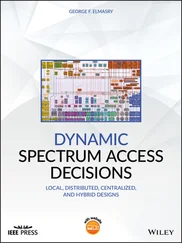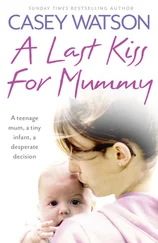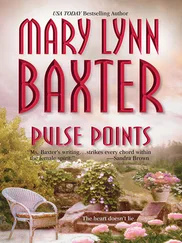In Mississippi, workers had cleared forty-six million cubic yards of storm debris, double the amount Hurricane Andrew left behind. More than forty-three thousand residents had repaired or rebuilt their homes. Traffic flowed over new bridges spanning Biloxi Bay and Bay St. Louis. Tourists and employees had returned to revitalized casinos and beachfront hotels. And in an inspiring sign, every school damaged by Katrina had reopened.
While many predicted New Orleans would never be a major city again, 87 percent of the population before Katrina had returned. The I-10 bridge connecting New Orleans and Slidell had reopened. The number of restaurants in the city had exceeded the pre-Katrina figure. More than seventy thousand citizens had repaired or rebuilt their homes. The floodwalls and levees around New Orleans had been strengthened, and the Army Corps of Engineers had begun a massive project to provide “100-year flood protection.” The Superdome that once housed thousands of Katrina victims became the proud home of the Super Bowl champion New Orleans Saints.
The most uplifting change of all has come in education. Public schools that were decaying before the storm have reopened as modern facilities, with new teachers and leaders committed to reform and results. Dozens of charter schools have sprouted up across the city, offering parents more choices and greater flexibility. The Catholic archdiocese, led by Archbishop Alfred Hughes, continued its long tradition of educational excellence by reopening its schools quickly. The year after Katrina, New Orleans students improved their test scores. They improved more the next year, and even more the year after that.
When I gave my Farewell Address from the East Room of the White House in January 2009, one of the guests I invited was Dr. Tony Recasner, principal of Samuel J. Green Charter School in New Orleans. Tony started at the school in July 2005, after it had underperformed so severely that it was taken over by the state. Then Katrina hit.
When I visited in 2007, Tony told me about his innovative teaching methods, such as having students focus on one subject at a time for several weeks. He also told me about the results. Despite the enormous disadvantages facing his students, the percentage of those reading and doing math at grade level had more than tripled. “This school, which did not serve the community well in the past, is now really going to be a beacon of light,” Tony said.
The spirit of renewal at S.J. Green Charter School is present all across the Gulf Coast. With leadership from people like Tony, a new generation can build a better life than the one they inherited. And the true legacy of Katrina will be one of hope.
*In the fall of 2006, Congress amended the Insurrection Act to allow the president to deploy federal troops with law enforcement powers during natural disasters. Then, in 2008, they repealed the amendment.

 n July 30, 2008, Mohamad Kalyesubula sat in the front row of the East Room. He was a tall, trim African man. He had a big, bright smile. And he was supposed to be dead.
n July 30, 2008, Mohamad Kalyesubula sat in the front row of the East Room. He was a tall, trim African man. He had a big, bright smile. And he was supposed to be dead.
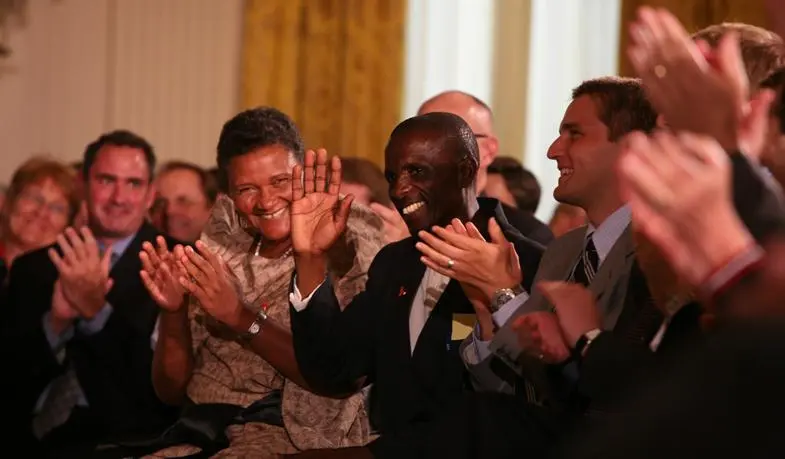
Mohamad Kalyesubula in the East Room of the White House. White House/Joyce Boghosian
Five years earlier, Laura and I had met Mohamad in Entebbe, Uganda, at a clinic run by The AIDS Support Organization, TASO. Located in a simple one-story brick building, the TASO clinic served thousands of AIDS patients. Like most suffering the advanced stages of the disease, Mohamad was wasting away. He ate little. He battled constant fevers. He had been confined to a bed for almost a year.
I expected TASO to be a place of abject hopelessness. But it was not. A handpainted sign over the door read “Living Positively with HIV/AIDS.” A choir of children, many of them orphans who had lost parents to AIDS, sang hymns that proclaimed their faith and hope. They ended with a sweet rendition of “America the Beautiful.” “I have a dream,” Mohamad told me from his hospital bed. “One day, I will come to the United States.”
I left the clinic inspired. The patients reaffirmed my conviction that every life has dignity and value, because every person bears the mark of Almighty God. I saw their suffering as a challenge to the words of the Gospel: “To whom much is given, much is required.”
America had been given a lot, and I resolved that we would answer the call. Earlier that year I had proposed, and Congress had passed, a $15 billion initiative to fight HIV/AIDS in Africa. The President’s Emergency Plan for AIDS Relief, PEPFAR, constituted the largest international health initiative to combat a specific disease. I hoped it would serve as a medical version of the Marshall Plan. “This is my country’s pledge to the people of Africa and the people of Uganda,” I said at the TASO clinic. “You are not alone in this fight. America has decided to act.”
Three months later, Mohamad received his first antiretroviral drugs. The medicine renewed his strength. Eventually he was able to get out of bed. He took a job at the TASO clinic and earned enough money to support his six children. In the summer of 2008, we invited Mohamad to the White House to watch me sign a bill more than doubling our worldwide commitment to fight HIV/AIDS. I hardly recognized him. His shriveled body had grown robust and strong. He had returned to life.
He was not the only one. In five years, the number of Africans receiving AIDS medicine had risen from fifty thousand to nearly three million—more than two million of them supported by PEPFAR. People who had been given up for dead were restored to healthy and productive lives. Calling to mind the story of Jesus raising his friend from the dead, Africans came up with a phrase to describe the transformation. They called it the Lazarus Effect.

In 1990, Dad asked me to lead a delegation to Gambia to celebrate its twenty-fifth anniversary of independence. A small West African nation with a population of about nine hundred thousand, Gambia was best known in America as the home of the forebears of Alex Haley, the author of Roots . Laura and I had read the Pulitzer Prize–winning book in which Haley traces his lineage back to an African man taken by slave traders in the 1700s.
Sadly, Gambia did not seem to have developed much since then. Laura and I were driven around the capital, Banjul, in an old Chevrolet provided by the embassy. The main road was paved. The rest were dirt. Most people we saw traveled by foot, often with heavy loads on their backs. The highlight of the trip was the ceremony celebrating Gambian independence. It took place in the national stadium, where the paint was peeling and concrete was chipped away. I remember thinking that high school stadiums in West Texas were a lot more modern than Gambia’s showcase.
Gambia was in the back of my mind eight years later when I started thinking about running for president. Condi Rice and I spent long hours discussing foreign policy on the back porch of the Governor’s Mansion. One day our conversation turned to Africa. Condi had strong feelings on the subject. She felt Africa had great potential, but had too often been neglected. We agreed that Africa would be a serious part of my foreign policy.
I considered America a generous nation with a moral responsibility to do our part to help relieve poverty and despair. The question was how to do it effectively. Our foreign assistance programs in Africa had a lousy track record. Most were designed during the Cold War to support anticommunist governments. While our aid helped keep friendly regimes in power, it didn’t do much to improve the lives of ordinary people. In 2001, Africa received $14 billion in foreign aid, more than any other continent. Yet economic growth per capita was flat, even worse than it had been in the 1970s.
Читать дальше


 n July 30, 2008, Mohamad Kalyesubula sat in the front row of the East Room. He was a tall, trim African man. He had a big, bright smile. And he was supposed to be dead.
n July 30, 2008, Mohamad Kalyesubula sat in the front row of the East Room. He was a tall, trim African man. He had a big, bright smile. And he was supposed to be dead.




